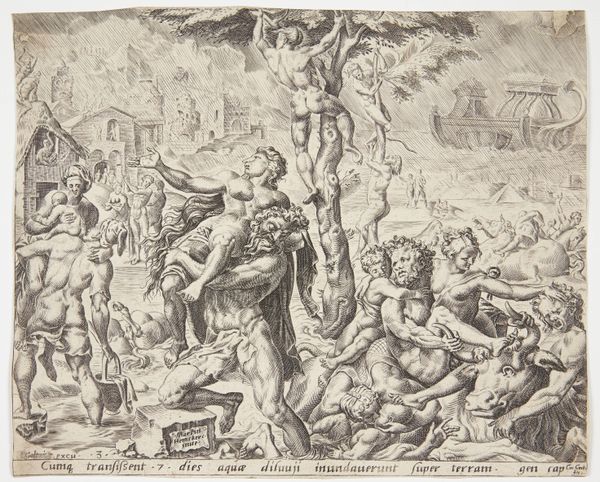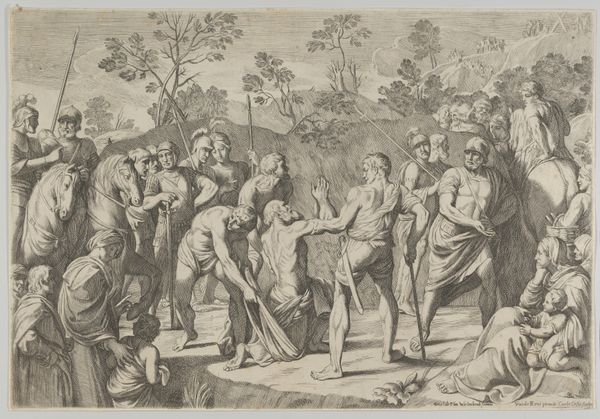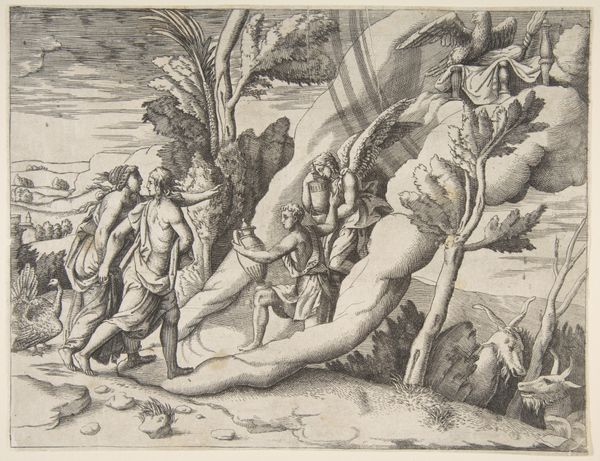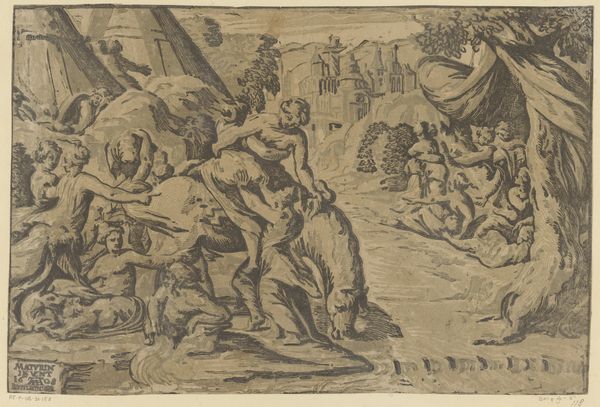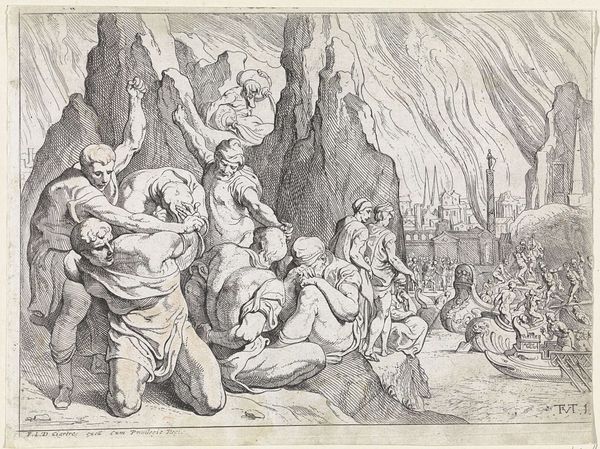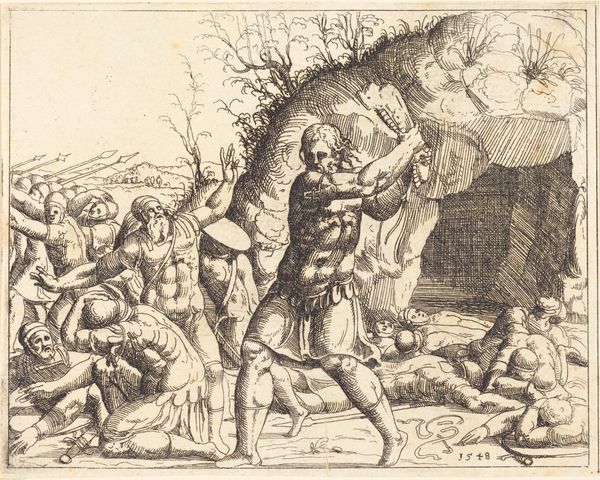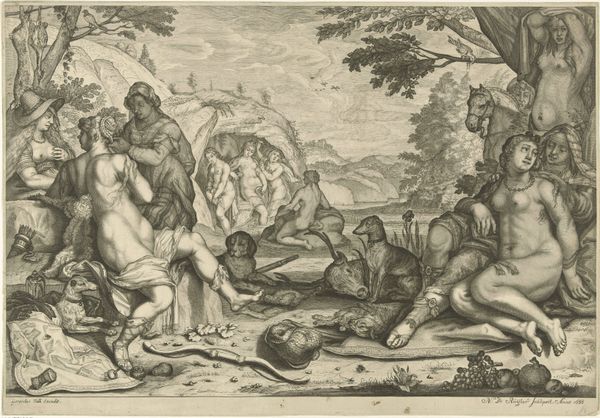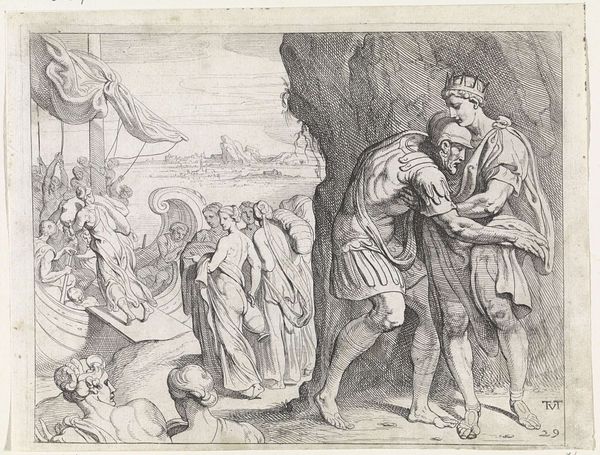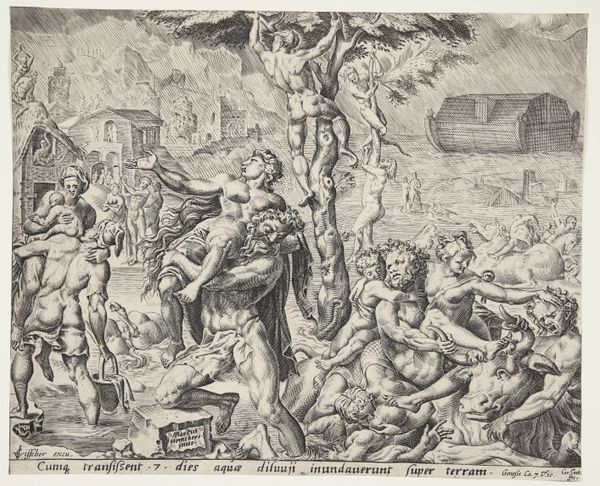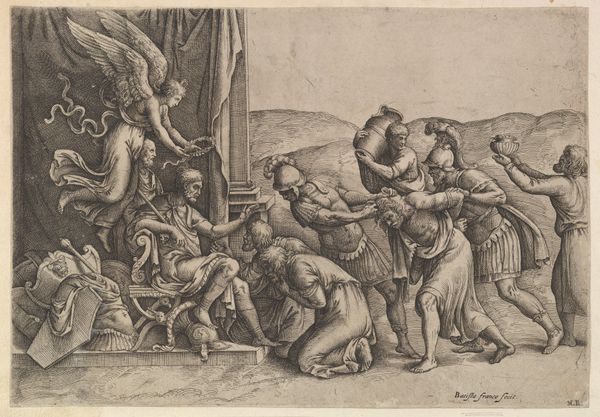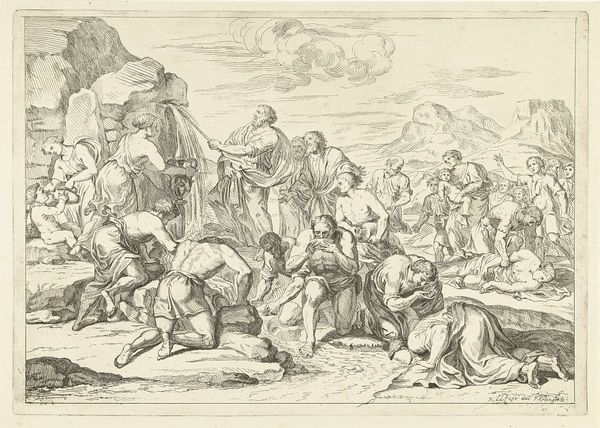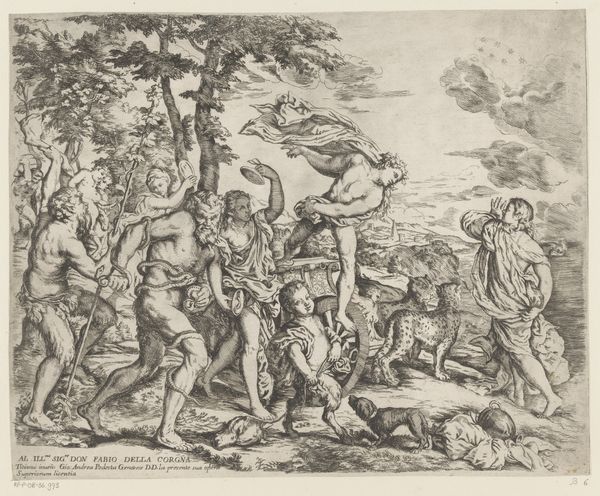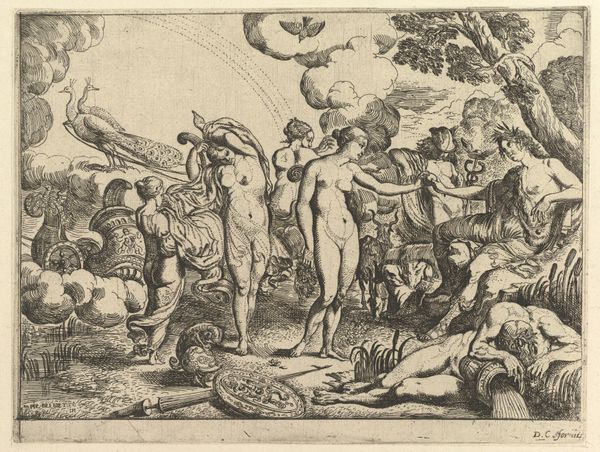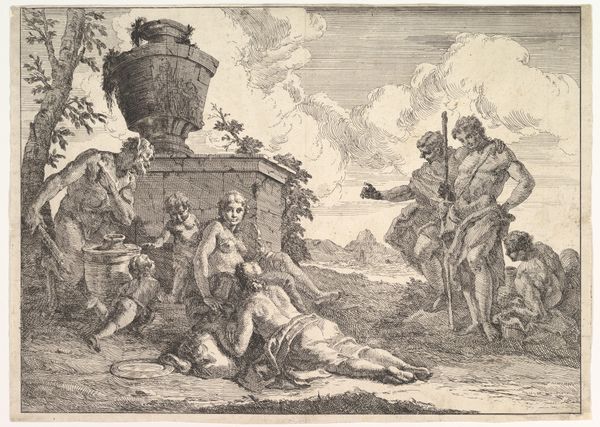
drawing, print, engraving
#
drawing
#
narrative-art
# print
#
figuration
#
horse
#
history-painting
#
italian-renaissance
#
engraving
Dimensions: sheet: 9 15/16 x 13 1/8 in. (25.2 x 33.3 cm) trimmed to platemark
Copyright: Public Domain
Curator: Take a look at Battista Franco's "Christ Carrying the Cross," an engraving dating back to between 1547 and 1557, here at the Metropolitan Museum of Art. Editor: Wow, a cascade of bodies. It's almost overwhelming. It feels like the chaos is the point, that suffocating sense of… inevitability, maybe? Curator: Indeed. Franco captures a pivotal scene brimming with theological significance and the burden of sacrifice. It resonates as a key theme of Italian Renaissance art, a dramatic and somewhat historical rendering of human action and religious drama. Notice the expressions – despair, brutality, resignation. They all contribute to this atmosphere of somber weightiness. Editor: That's true, although I find my eyes keep returning to the figures in the margins. The soldier on horseback seems almost nonchalant. Then you have those mournful onlookers off to the right, almost hidden in the shadows, clutching each other for support. It's as if Franco wants to highlight these quiet moments of grief within all the pomp and spectacle of this moment. Curator: Franco really wants us to think about all these facets of emotion and power playing out in what we know, theologically, as an immutable event. And as a print, this would have allowed the image and its symbolism to spread quite quickly, thus having an immediate effect on culture and society. Editor: It really works—you can see how someone looking at it, back in the day, might have connected this procession to personal suffering. Makes you wonder what sorts of suffering this print actually accompanied. Curator: Precisely, what traumas this small window gave structure to and allowed emotional access to through its culturally coded symbols. It really captures the Italian Renaissance. Editor: Well, now I can't help but feel the heaviness of those figures. Food for thought, indeed.
Comments
No comments
Be the first to comment and join the conversation on the ultimate creative platform.
